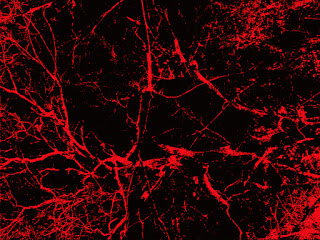Back to my basic questions
Now, finally, I would like to come back to my original questions about who/how/why invented such ideas of ‘circumcision’. Here I drew much helpful information from the book ‘Genesis of Symbolic Thought’ by Alan Barnard (highly recommended)
 |
| Genesis of Symbolic Thought, Alan Barnard |
A person can
only grasp the concept of ‘circumcision’ if they are enough evolved
(like homo sapiens (sapiens)) to understand the meaning and implications
of doing this. Furthermore, in order to connect this practice with cultural
or religious identity and embed it into the cycle of life, more abstract
concepts and symbolizations must be understood and communicated. Theories of mind and the understanding of
levels on intentionality must also be available.
 |
Petroglyph, Fremont archaeological
culture, eastern Utah, United States. Copyright by J. Q. Jacobs,
jqjacobs.net". This file is licensed under the Creative
Commons Attribution-Share Alike 2.5. Link: https://commons.wikimedia.org/wiki/File:Petroglyph_jqjacobs.jpg
I think it can be safely assumed that Neandertals (120,000 BCE) as well as the upcoming Homo sapiens already had a complex understanding of life and death (e.g., burial rites). They also must have understood the importance of the ‘reproductive organs’ – and they must also have had a pretty good understanding of how they worked.
Then they (most certainly) must have felt sexual desire und lust. Were they surprised about this, fascinated, or profoundly bewildered?
They must have developed a sufficient understanding of how the sex organs facilitated reproduction (conceiving, birth). Have they revered these organs (I think so)?
 |
| Anbangbang_gallery_Mimi_rock_art_cropped. Source: Photo by and ©2002 Dustin M. Ramsey (Kralizec!). This file is licensed under the Creative Commons Attribution-Share Alike 2.5. Link: https://commons.wikimedia.org/wiki/File:Anbangbang_gallery_Mimi_rock_art_cropped.jpg |
But how did
they communicate their ideas among themselves? By gestures, symbolic paintings,
onomatopoeia (the process of creating a word
that phonetically imitates, resembles, or suggests the sound that it
describes). How did they express their more abstract ideas? For sure, they must
have been creative and invented means to do this, and for sure, they also must
have had their prodigies.
Maybe they have felt the need to paint, tattoo, or ornament their bodies, or to carry out other types of body modifications like elongated necks (means: pushed down collar bones), lip plugs, discs or plates, [you see, I am talking about these practices, though very strange to me), teeth sharpening, scarification, … there are certainly more extremes [now I stop]..
 |
Kohaito, grotta di adi alauti con
pitture rupestri databili al 2500 ac ca. 14 bestiame. This file is licensed under
the Creative Commons Attribution-Share Alike 2.5. Author: Sailko.Link:
https://commons.wikimedia.org/wiki/File:Kohaito,_grotta_di_adi_alauti_con_pitture_rupestri_databili_al_2500_ac_ca._14_bestiame.JPG
Sure, they most likely invented methods to cut foreskin if there was a dangerous phimosis, and must also have come up with remedies against other life threating harms (e.g., during birth, involuntary penis mutilation due to an accident, …). Did they practice male (and female) circumcision just to keep them clean and non-smelly? Did they cut on order to minimize or even extend sexual pleasure and/or to prevent masturbation (loss of semen).
 |
Chongoni Rock-Art Area-110134. This file has been provided
by UNESCO (unesco.org) as part of a GLAM-Wiki
partnership. It is also available on the UNESCO website. This file is licensed under
the Creative Commons Attribution-Share Alike 3.0 IGO
And what about female circumcision / cutting / mutilation? To keep them at bay, to prevent promiscuity, to tame their sexual appetite? I cannot really assume that this practice was invented by woman. I think it was male control issue. Am I wrong?
And why is only the (male) prepuce sacrificed to a God and not the cut female parts? (Oh well, for sure, woman are less worthy than men, so their body parts don’t count as legitimate sacrifices).
As you can see, I don’t know the answers. The origin and initial concepts remain a mystery. Sadly.



Comments
Post a Comment